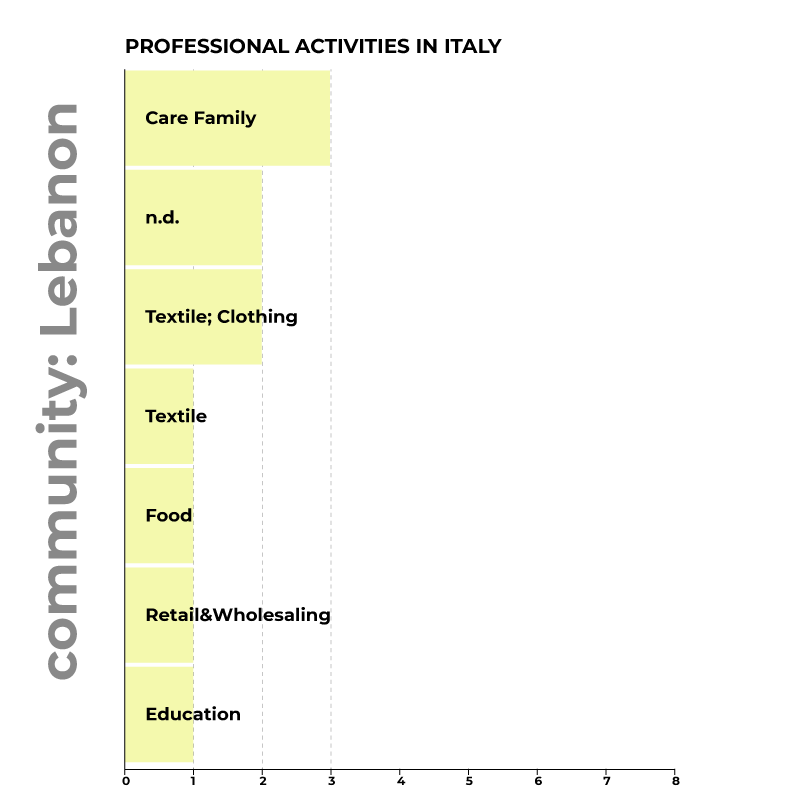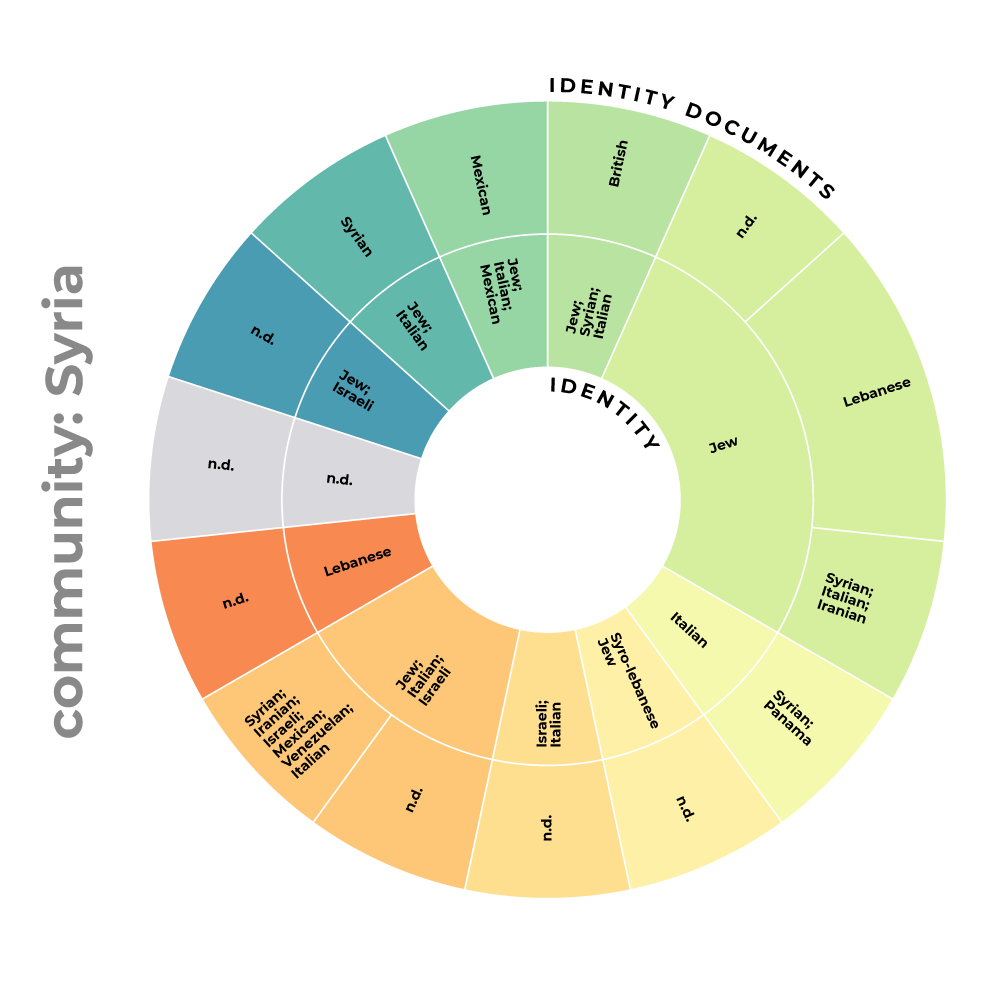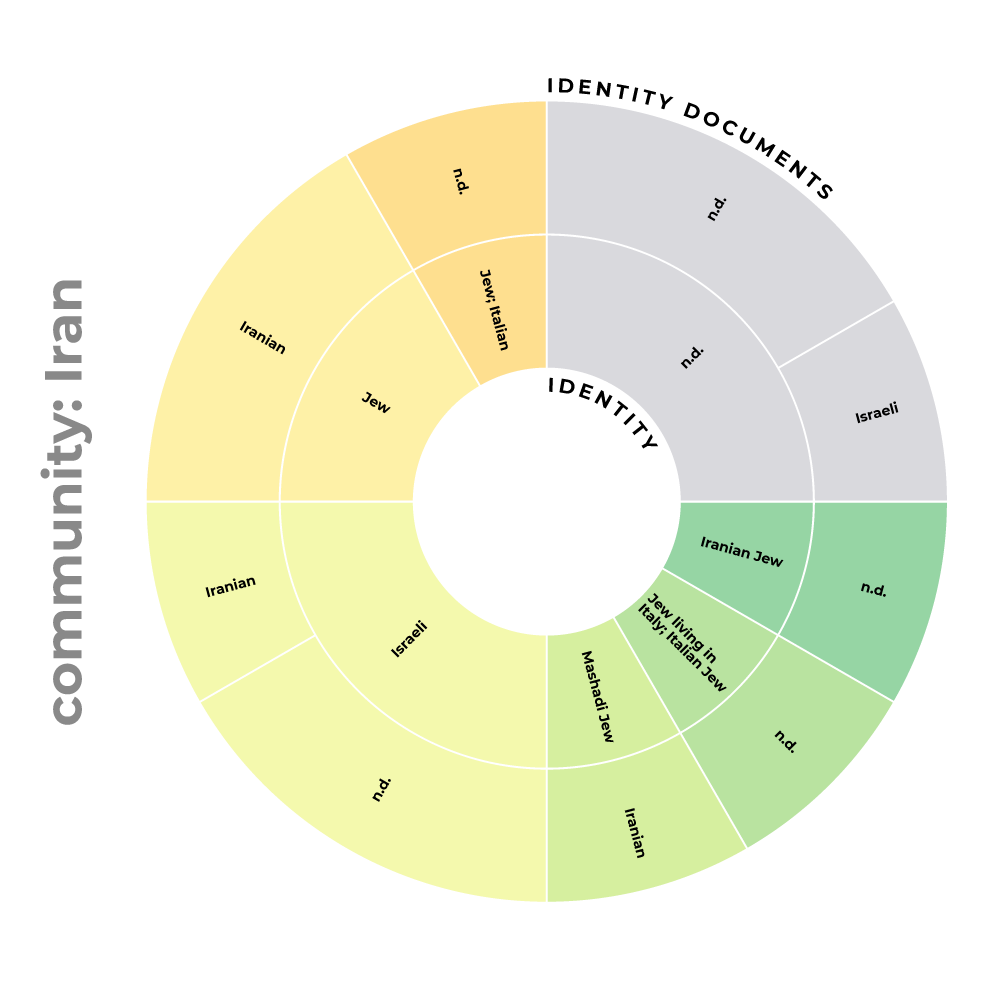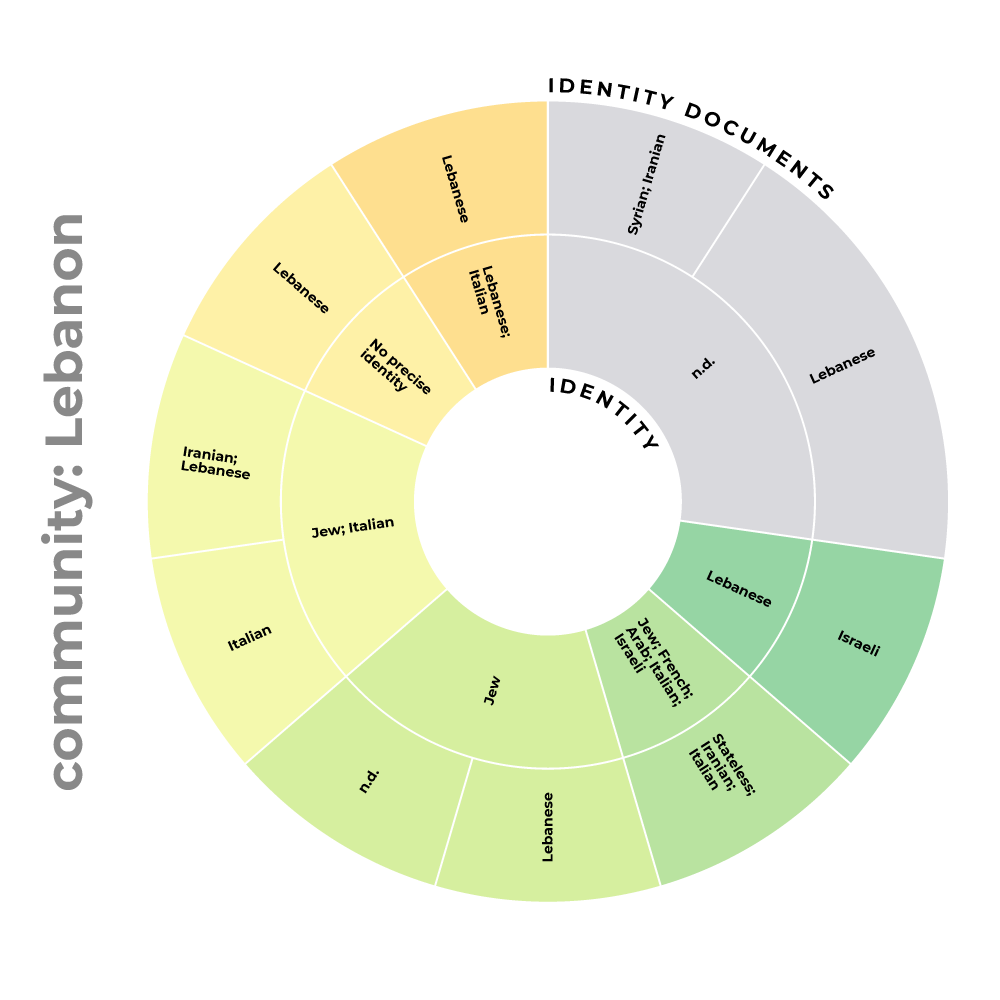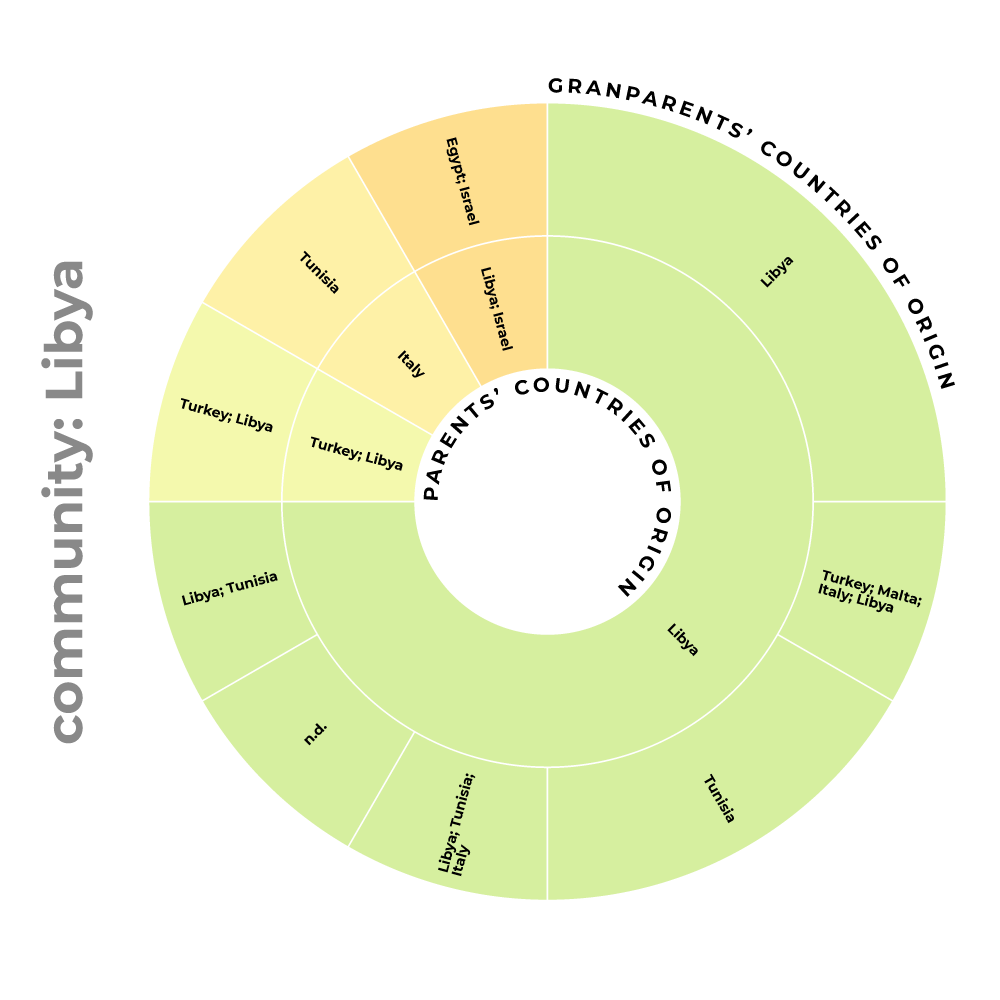Jewish Migrations from North Africa and the Middle East to Milan (1940s-1970s)
The digital visualisation Mapping Roots, Charting Routes concerns the specific case of Jewish migrations from the Middle East and North Africa to Milan (Italy). It is based on 108 interviews conducted by the CDEC Foundation – Edoth Project (2011-2019) with Jews from Egypt, Iran, Lebanon, Libya and Syria, who settled in the city between the 1940s and 1970s. The corpus includes 48 women and 60 men.
Mapping Roots, Charting Routes can be navigated by setting different filters: gender, home community, identity documents, year of settlement in Milan, place and cause of departure. The general map highlights the settlement trip to Milan from the country of origin. By clicking on the individual trajectory, dashed lines display the intermediate trips and an individual portrait opens.
Along with the anonymized personal data of the traveller, the individual portrait includes the countries of origin of the family members, the identity documents they possessed, the languages spoken in the family circle along with the professional activity and the cause of departure. In a future development of the project, more information will be added in this section.
The map is accompanied by a series of graphs and charts which elaborate the information in an aggregated form: according to the home community, that is the country of origin. For instance, the graphs display the correlation between the personal identity claimed by the interviewee with the identity documents possessed by her/his family.
Through this sample of interviews, the digital visualisation Mapping Roots, Charting Routes attempts to depict the overall complexity of the migratory phenomenon while paying attention to the peculiarity of each journey. It is an attempt to hold the ‘whole’ and the ‘fragment’ in the effort to come closer to the sense people make—and made—of their journey as individuals but also as part of a larger collective.
In a way, this is what digital humanities are about: keeping the human experience at the core while experimenting with computer assisted technologies to elaborate, visualize and connect the data of and about that very human experience.


Filter by:
Graphs & Charts
Cause of departure
The graphs show the causes of departure for each community. These include:
– Nd (not declared) = no clear cause is expressed;
– Study = educational purposes (i.e., University or vocational training);
– Economics = job offer; economic difficulties in the country of origin; better economic opportunities; job related trip; entrepreneurship;
– Politics = expulsion; political instability; insecurity due to political instability; war; discrimination.
– Family = marriage; family reunification;
– Ideology = refers specifically to migration to Israel when ideological causes are expressed (i.e., Zionism, belonging to youth Zionist movements, attachment to Israel).
Professional activities
The graphs show, for each community, the professional activities performed by the interviewees. Activities are grouped in categories, some being more specific – such as Carpets or Precious/Gemstones – while others less. The category Care includes jobs related to the care of individuals and groups (i.e., Health Care, Elderly Care, Religious Care-Rabbi or Chazan), while Care Family refers to work performed within the Interviewee’s family.
Identity / ID documents
For each community, the charts show the correlation between the personal identity claimed by the interviewee (inner circle) with the identity documents possessed by the interviewee’s family (outer circle). The outer circle Identity documents includes different sorts of personal identification documents possessed by the interviewee and/or family members, such as passports, laissez-passer, personal identity card. The inner circle Identity displays the many combinations interviewees resort to in order to express their personal belonging(s).
I wish to thank the CDEC Foundation and its wonderful staff for providing me with unvaluable archival materials and trustful support. I acknowledge Dr. Sara Radice for the User experience & interface design as well as Dr. Fabio Sturaro for the Software design & development.







